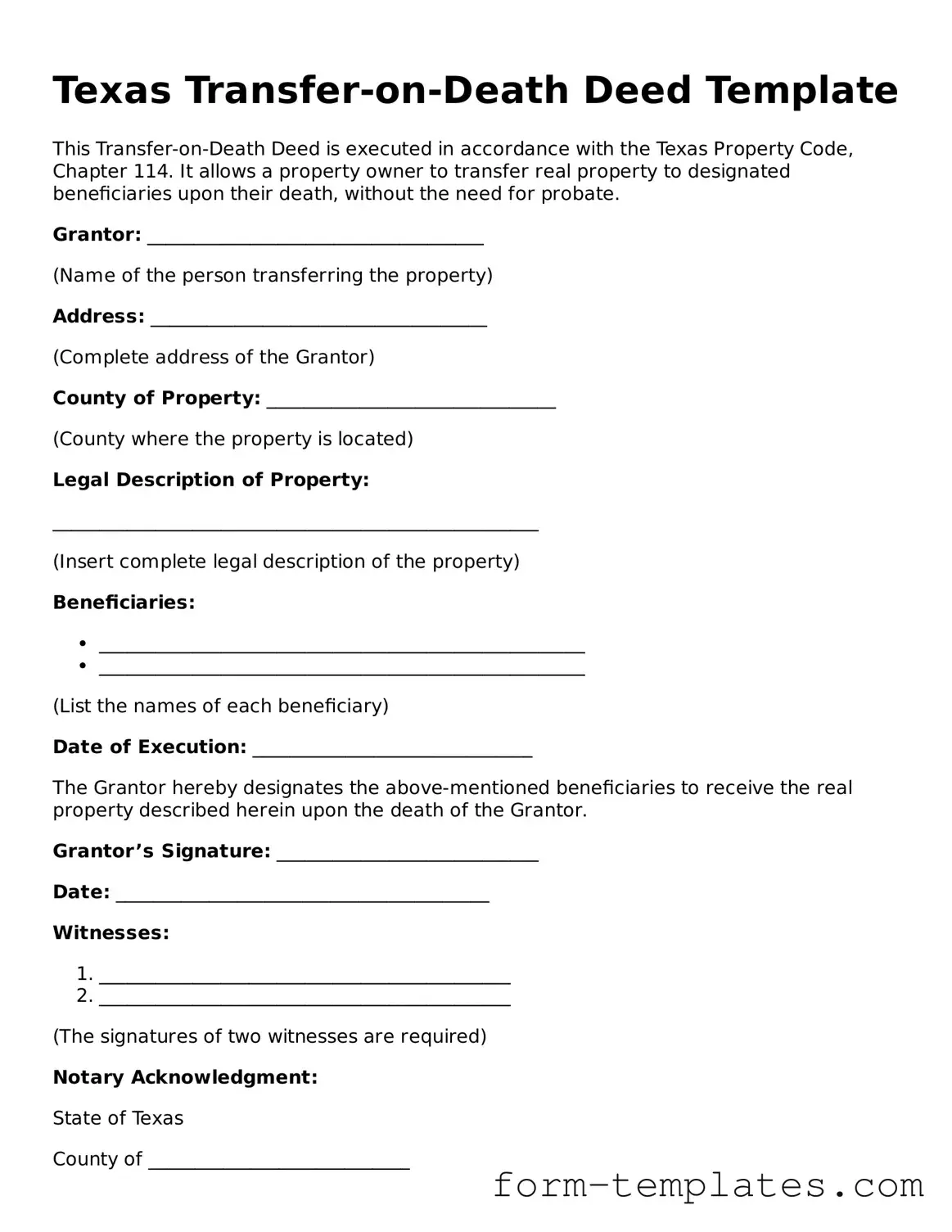Texas Transfer-on-Death Deed Template
This Transfer-on-Death Deed is executed in accordance with the Texas Property Code, Chapter 114. It allows a property owner to transfer real property to designated beneficiaries upon their death, without the need for probate.
Grantor: ____________________________________
(Name of the person transferring the property)
Address: ____________________________________
(Complete address of the Grantor)
County of Property: _______________________________
(County where the property is located)
Legal Description of Property:
____________________________________________________
(Insert complete legal description of the property)
Beneficiaries:
- ____________________________________________________
- ____________________________________________________
(List the names of each beneficiary)
Date of Execution: ______________________________
The Grantor hereby designates the above-mentioned beneficiaries to receive the real property described herein upon the death of the Grantor.
Grantor’s Signature: ____________________________
Date: ________________________________________
Witnesses:
- ____________________________________________
- ____________________________________________
(The signatures of two witnesses are required)
Notary Acknowledgment:
State of Texas
County of ____________________________
Subscribed and sworn to before me this ______ day of ____________, 20__.
My commission expires: ________________________
Notary Public Signature: ________________________
